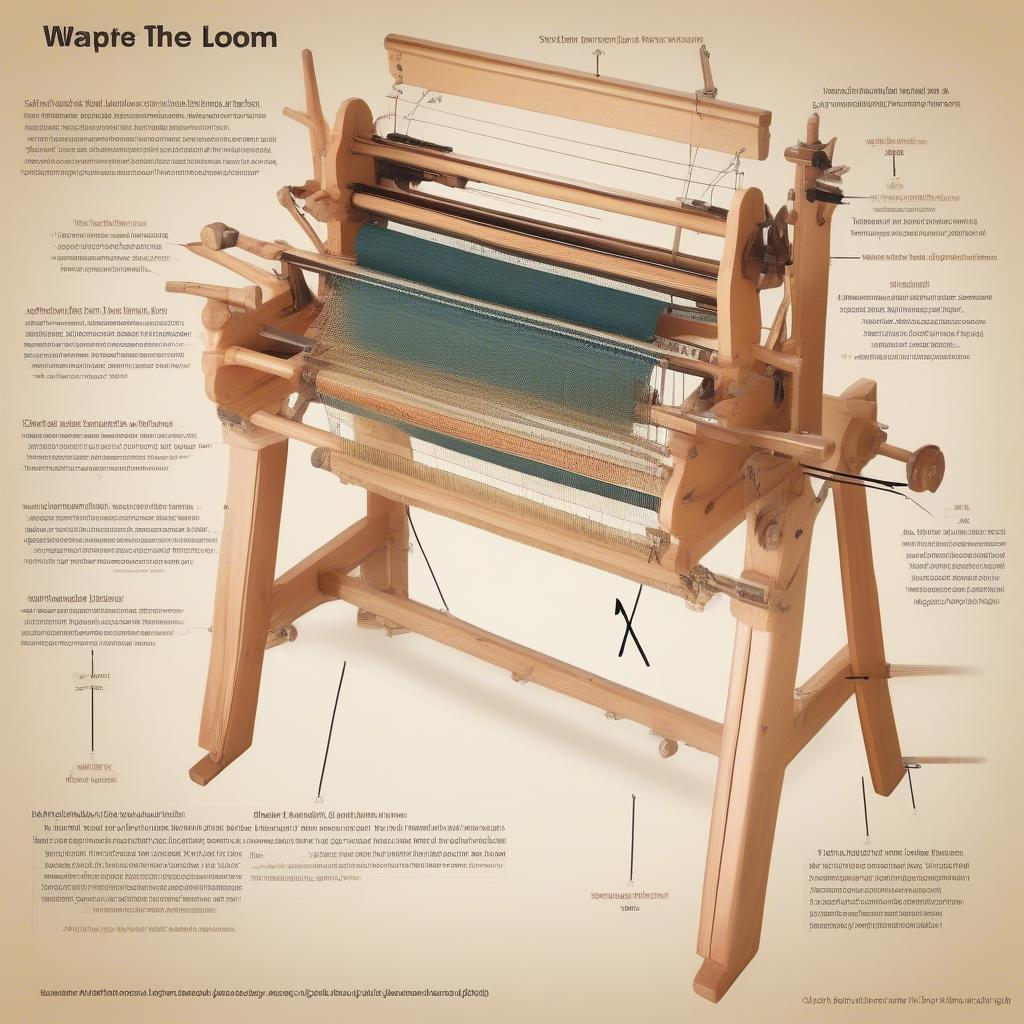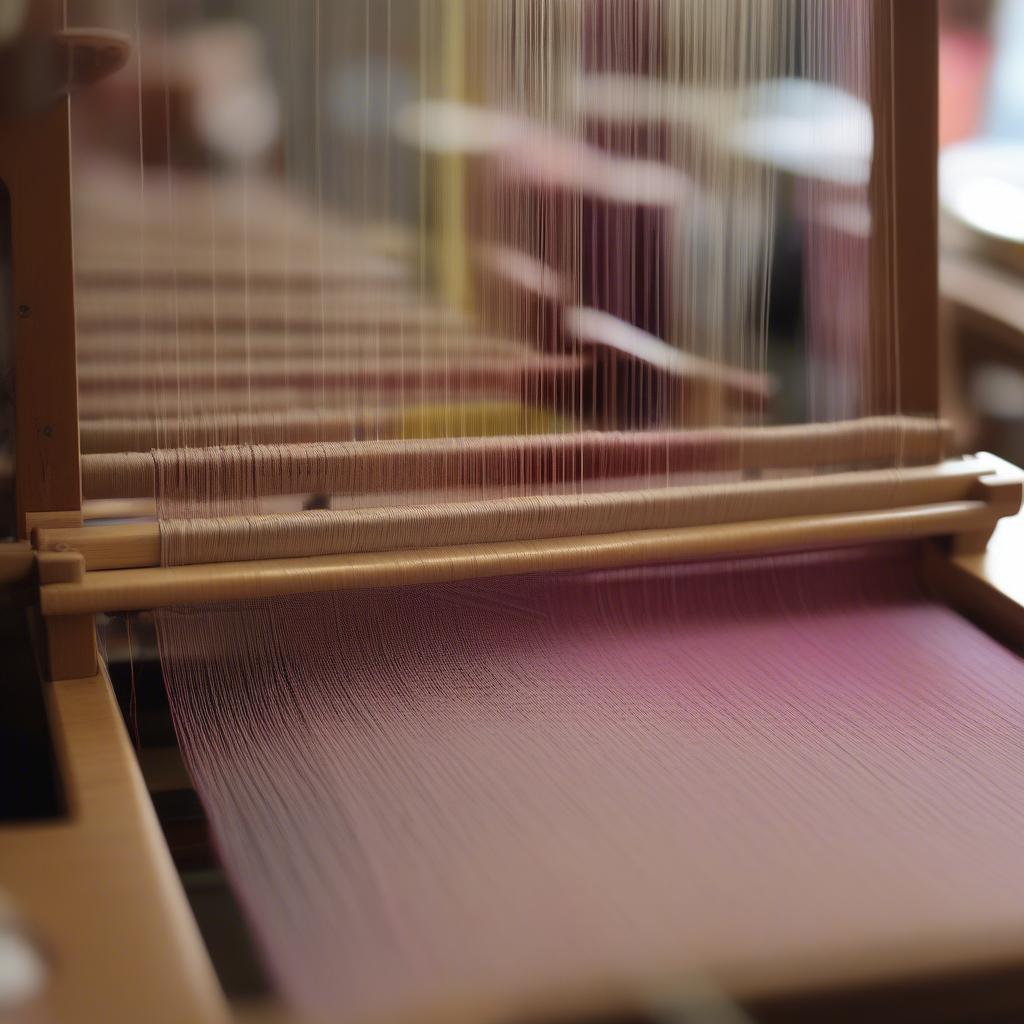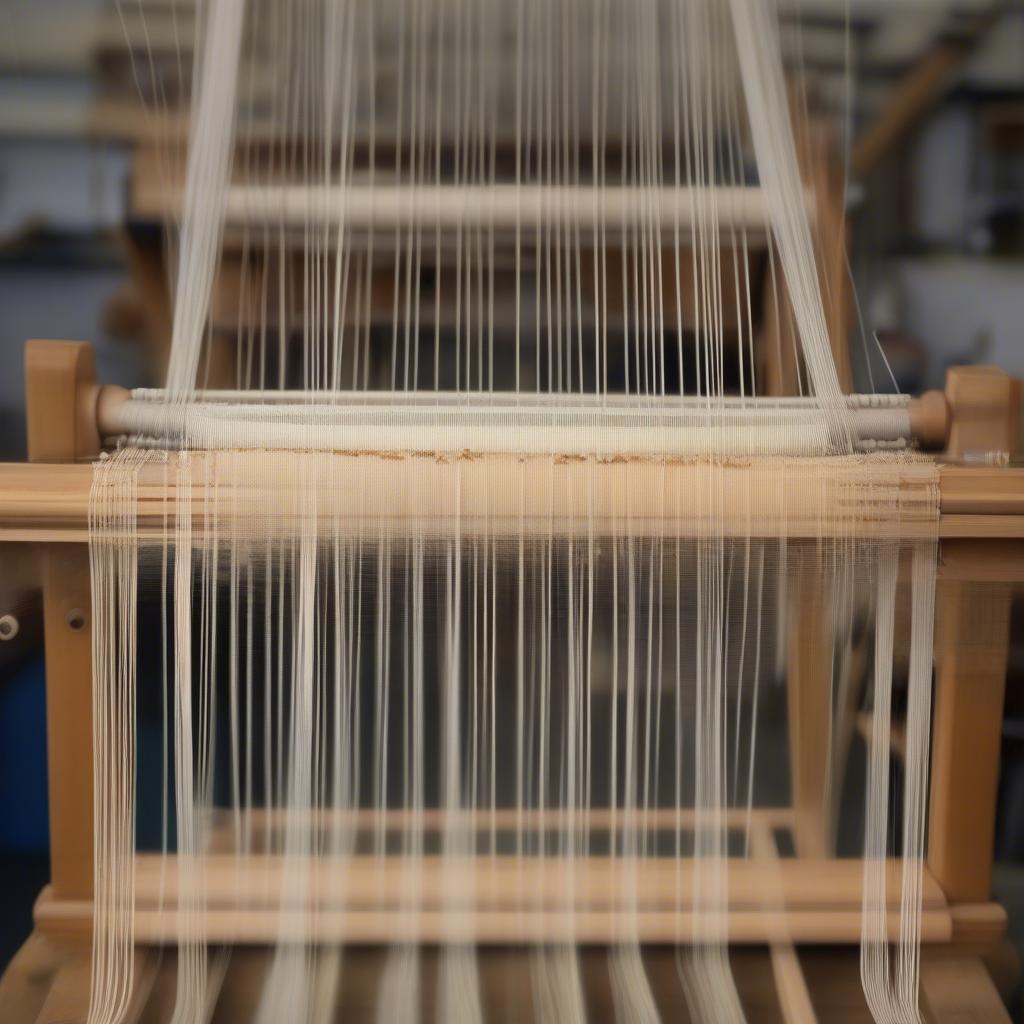Weave Table
How to Set Up a Table Loom for Weaving
Setting up a table loom for weaving can seem daunting at first, but with a little patience and the right guidance, it becomes a straightforward process. This guide will walk you through each step, from warping the loom to creating your first woven masterpiece. Whether you’re a beginner or looking for a refresher, we’ll cover everything you need to know about How To Set Up A Table Loom For Weaving.
Understanding Your Table Loom
Before diving into the setup process, familiarize yourself with the different parts of your loom. Key components include the warp beam, cloth beam, heddles, reed, and beater. Understanding their function is crucial for successful weaving. The warp beam holds the warp threads, while the cloth beam winds the finished fabric. Heddles lift specific warp threads to create the shed, through which the weft thread passes. The reed evenly spaces the warp threads, and the beater packs the weft thread into place.
 Table Loom Parts Identification
Table Loom Parts Identification
Preparing the Warp
Measuring and winding the warp is the first step in setting up your table loom for weaving. Determine the desired length and width of your finished piece, adding extra length for loom waste and shrinkage. Use a warping board or warping mill to create a chain of evenly tensioned warp threads. This ensures consistent tension throughout the weaving process.
Dressing the Loom
Dressing the loom, often considered the most challenging part of the process, involves threading the warp threads through the heddles and reed. Follow the threading draft for your chosen weaving pattern meticulously. This ensures the correct pattern formation on your finished fabric. Once threaded, wind the warp threads onto the warp beam, ensuring even tension across all threads. This prevents uneven weaving and ensures a smooth, consistent finished product.
 Threading Heddles on a Table Loom
Threading Heddles on a Table Loom
Tying onto the Cloth Beam
After threading the heddles and reed, tie the warp threads onto the cloth beam. This anchors the warp and allows you to begin weaving. Ensure the warp threads are evenly distributed and tied securely. Even tension is again crucial for a smooth weaving experience. You might consider a table top weaving loom for smaller projects.
Making the First Shed
Once the warp is tied on, create the first shed by lifting the appropriate heddles. This creates the opening for the weft thread to pass through. Use a shed stick to maintain the shed and make passing the weft thread easier. For a different approach, you can explore a high top weave table.
Beginning to Weave
With the first shed created, you can now begin weaving. Pass the weft thread through the shed using a shuttle. After each pass, beat the weft thread into place using the beater. This packs the weft thread tightly and creates a dense, even weave. Continue this process, alternating sheds and passing the weft thread, until your desired length is achieved. Perhaps a 10 inch table top weaving loom is a perfect starting point for you.
 Weaving on a Table Loom – Creating the Shed
Weaving on a Table Loom – Creating the Shed
Troubleshooting Common Issues
Sometimes, you might encounter challenges like broken warp threads or uneven tension. Learning to troubleshoot these issues is an essential part of the weaving process. A consistent weaving tension is crucial for a successful final product. Consider looking at a weaved table for inspiration.
Conclusion
Setting up a table loom for weaving is a rewarding experience. By understanding each step and practicing regularly, you can create beautiful and intricate woven pieces. Remember to maintain even tension throughout the process, from warping to weaving. Now that you know how to set up a table loom for weaving, start your weaving journey and unleash your creativity!
FAQ
- What is the best type of yarn for table loom weaving?
- How do I fix a broken warp thread?
- How can I maintain consistent tension while weaving?
- What are some common table loom weaving mistakes?
- Where can I find table loom weaving patterns?
- What is the difference between a rigid heddle loom and a table loom?
- How do I choose the right reed for my project?
You might also be interested in a swedish weaving table runner pattern.
For further assistance, please contact our 24/7 customer service at Hotline: +84 388 951 999, or visit us at Hanoi, Vietnam or Tech Avenue, Suite 12, San Francisco, CA 94105, USA.
